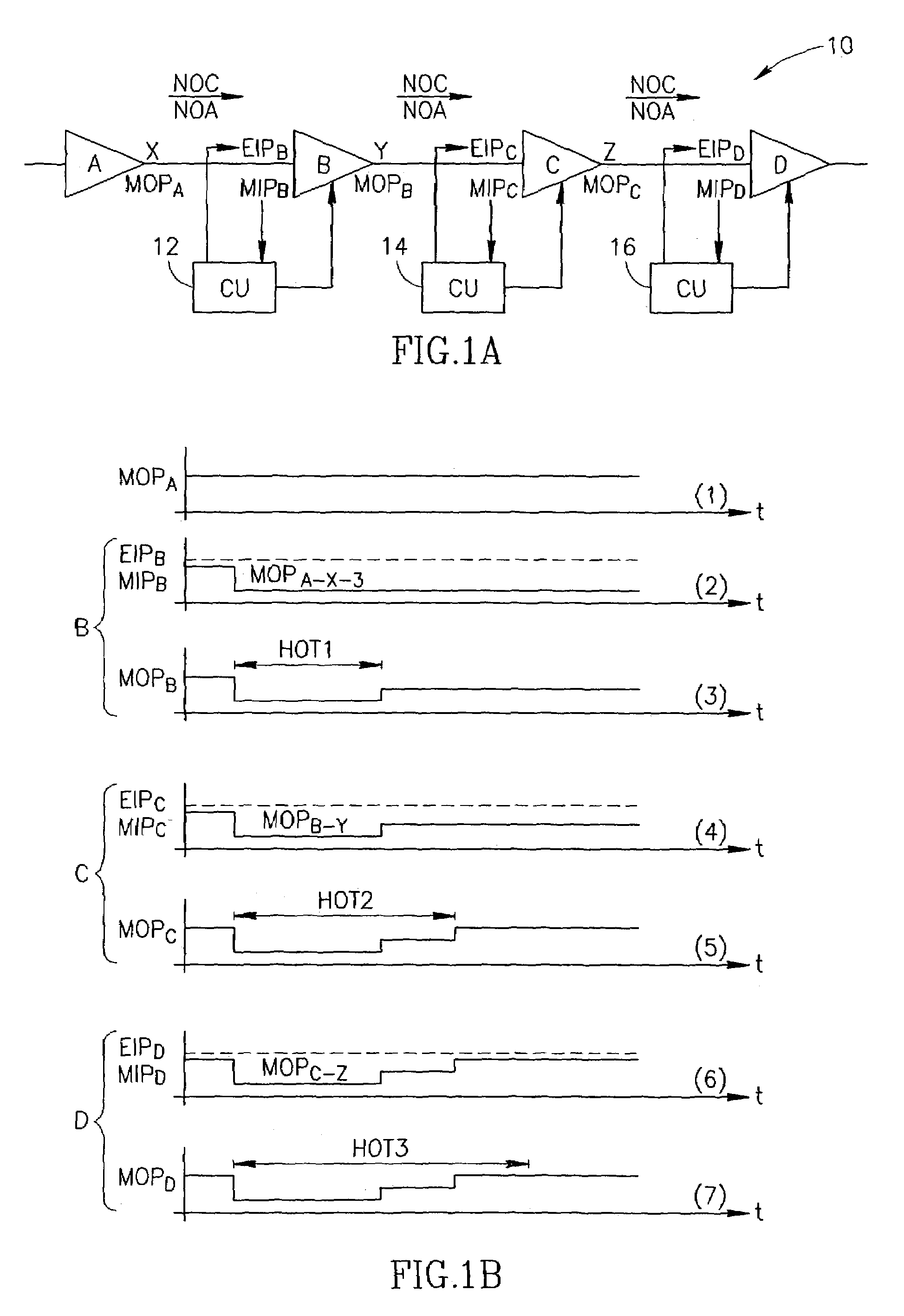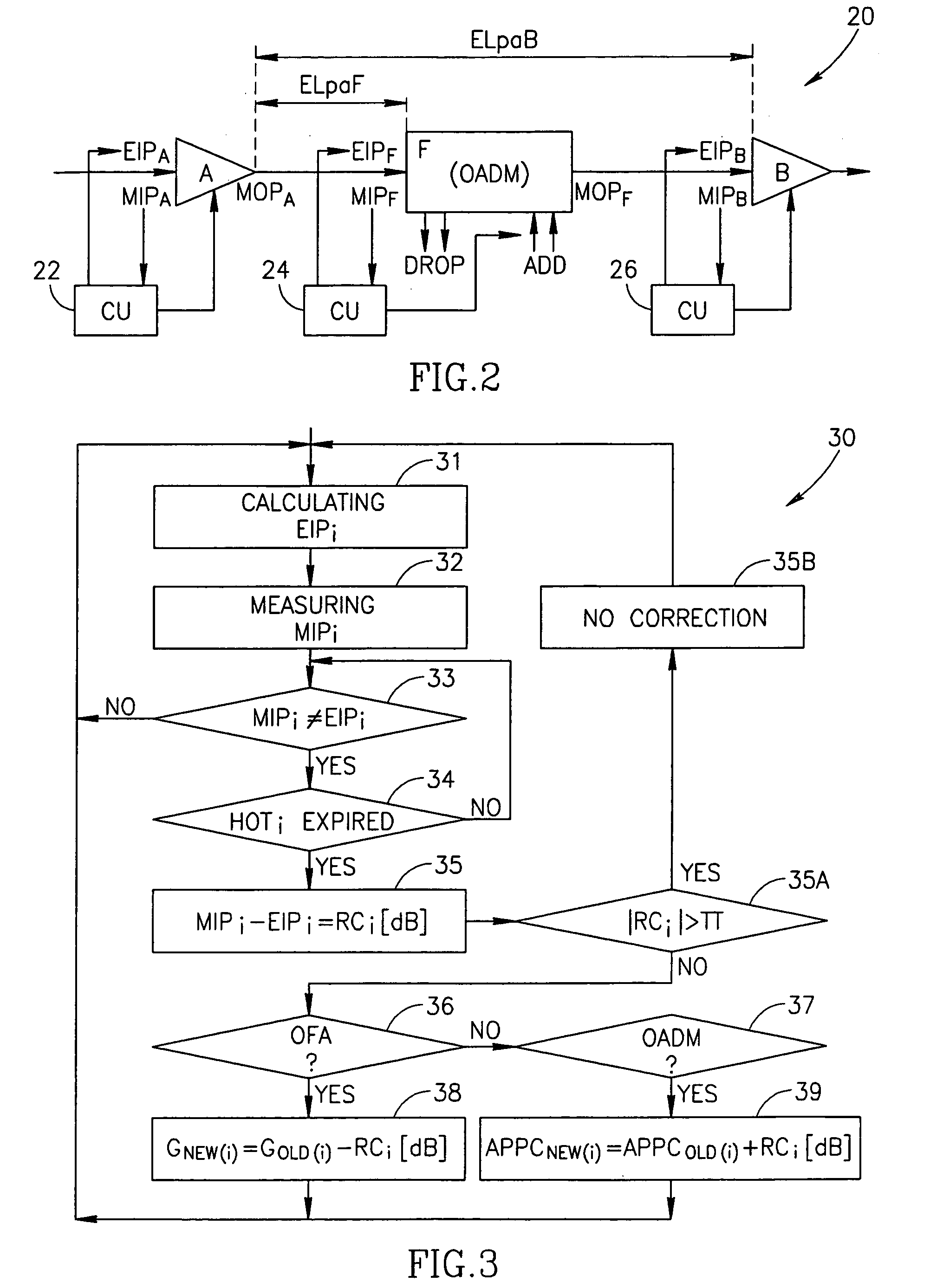Method and system for span optical power control
a technology of optical power control and span, applied in the field of balancing power, can solve problems such as dangerous overpowering and optical power control concep
- Summary
- Abstract
- Description
- Claims
- Application Information
AI Technical Summary
Benefits of technology
Problems solved by technology
Method used
Image
Examples
Embodiment Construction
[0073]The method described in the present application starts from a preliminary step of designing (pre-configuring) an optical communication line, comprising optical amplifiers and OADMs, by stating gains of the optical amplifiers, span losses, stating initial values of NOC and NOA for any point in the line, and also an expected output power per channel for each optical amplifier OFA. This expected output power per channel is further maintained to be constant.
[0074]The line is preliminarily designed (configured) and calculated to ensure, at each point thereof, the balanced (i.e., constant or equalized) power per optical channel in each span of the line at normal (predictable) conditions of the line's operation. The normal or predictable conditions are characterized by the following groups of parameters:
[0075]a) configuration parameters which must not change during the routine operation (nominal gains of the amplifiers; noise figures introduced by the amplifiers; span losses i.e., va...
PUM
 Login to View More
Login to View More Abstract
Description
Claims
Application Information
 Login to View More
Login to View More - R&D
- Intellectual Property
- Life Sciences
- Materials
- Tech Scout
- Unparalleled Data Quality
- Higher Quality Content
- 60% Fewer Hallucinations
Browse by: Latest US Patents, China's latest patents, Technical Efficacy Thesaurus, Application Domain, Technology Topic, Popular Technical Reports.
© 2025 PatSnap. All rights reserved.Legal|Privacy policy|Modern Slavery Act Transparency Statement|Sitemap|About US| Contact US: help@patsnap.com



